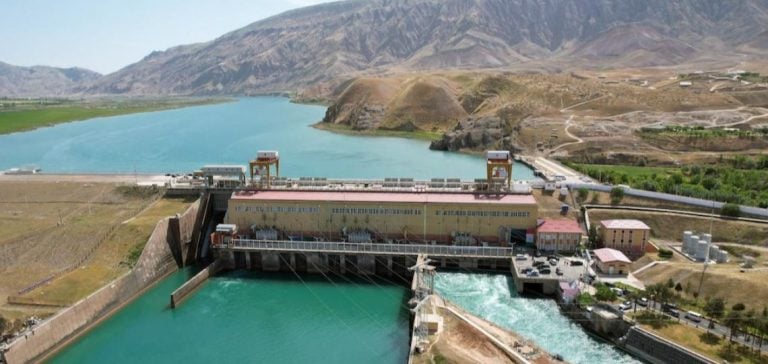Tajikistan, a country dependent on its hydroelectric resources for electricity supply, has been imposing electricity restrictions since September 22 due to a water shortage.
This decision is the result of a sharp drop in rainfall, compromising the ability of power plants to generate enough energy to meet the needs of the population and industrial sectors. In Central Asia, the scarcity of water resources is a major challenge, particularly for countries whose economies rely heavily on hydropower.
The water reserves of the Vakhch River, essential for supplying the country’s main hydroelectric infrastructures, have fallen significantly.
As a result, the Nourek hydroelectric plant, which supplies more than half of Tajikistan’s ten million inhabitants, is operating at reduced capacity.
The shortfall in electricity production is estimated at over one billion kilowatt-hours, a worrying figure given the increasing demand for energy as winter approaches.
Dependence on hydroelectricity
Tajikistan derives most of its electricity from hydropower, an asset that could turn into a vulnerability in the context of the current water crisis.
Low winter rainfall and rising temperatures are undermining the country’s 20,000 glaciers, crucial sources of water for its rivers.
These deteriorating conditions are preventing the necessary regeneration of water reserves, exacerbating the water stress on hydroelectric facilities.
Despite the current problems, Tajikistan continues to rely on the development of hydroelectric projects as a long-term solution.
The Rogoun dam, one of the government’s flagship projects, is set to become one of the world’s largest dams once completed.
This project is presented by President Emomali Rakhmon as a strategic lever for achieving energy independence and boosting electricity export capacity to neighboring countries.
The challenges of regional cooperation
Central Asia, a region once coordinated under the Soviet energy system, is struggling to restore genuine cooperation between its republics to jointly manage water and electricity resources.
The historic system of exchange between water and electricity, which enabled the region’s republics to bridge supply gaps, is now weakened by political tensions and aging infrastructure.
For countries like Tajikistan, the need to restore these mechanisms is becoming increasingly crucial, especially in times of shortage.
The lack of regional cooperation exacerbates Tajikistan’s internal problems, as the country regularly suffers energy shortages despite its under-exploited hydroelectric potential.
Restoring this cooperation would require major investment in infrastructure modernization and the political will to overcome historical differences.
The burden of aging infrastructure
Tajikistan’s energy infrastructure, in particular the power plants built during the Soviet era, are now showing their limitations in the face of rapidly changing energy requirements and climatic hazards.
The Nourek power plant, although a mainstay of the electricity supply, is struggling to maintain sufficient output, largely due to falling water levels in its reservoir.
This situation highlights the urgent need to renovate existing infrastructures and to pursue the development of new facilities capable of better managing water resources.
The Rogoun dam, although still under construction, is seen as a solution to these structural challenges.
However, accumulated delays and financial uncertainties surrounding the project are slowing down its completion.
The government remains optimistic about the project’s economic and energy benefits, but it will not provide an immediate response to the current crisis.
Energy outlook and uncertainties
As Tajikistan continues to navigate between water shortages and energy crises, the short-term outlook remains uncertain.
The effectiveness of the government’s energy policies, particularly in terms of investment in new projects such as Rogoun, remains to be proven.
What’s more, regional cooperation, essential for optimal resource management, remains fragile in a context where each country is seeking to secure its own supply.
Tajikistan is at a decisive turning point in its energy management, with the need to strengthen its infrastructure, diversify its energy sources, and ensure better collaboration with its neighbors.
In the immediate future, the electricity restrictions imposed on the population could become more frequent if the water situation does not improve rapidly.






















